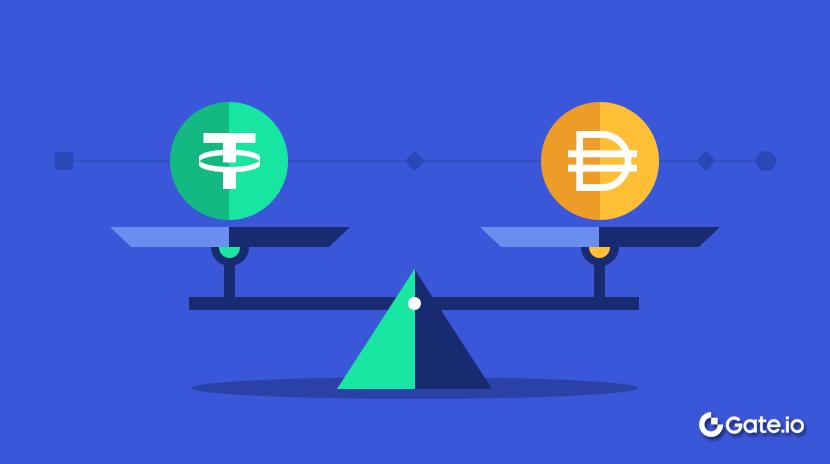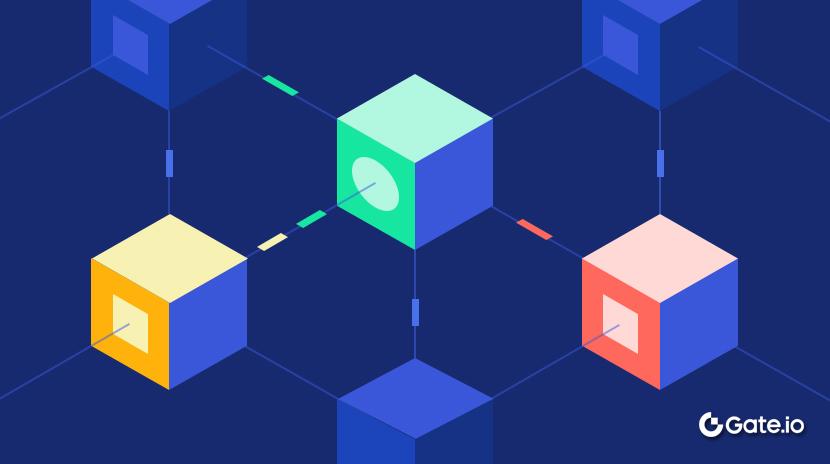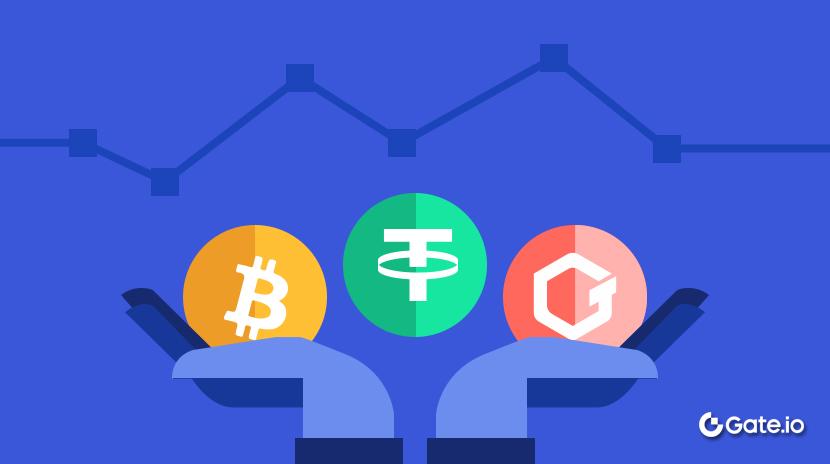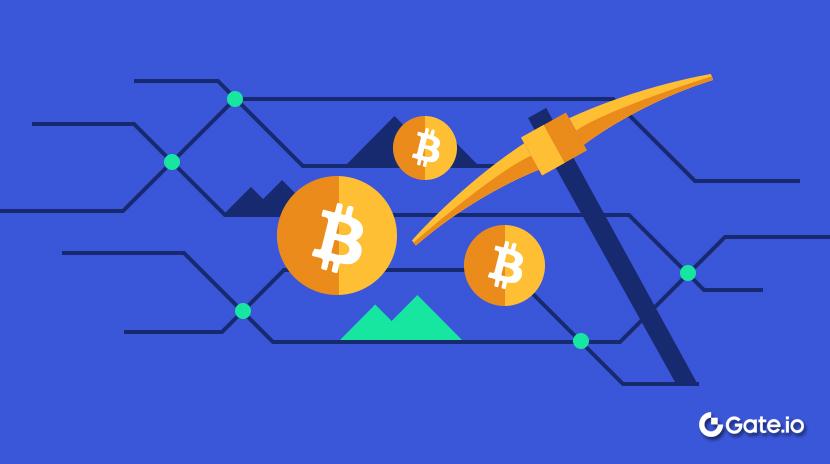Ý nghĩa của DeepSeek đối với Tiền điện tử và các tác nhân trí tuệ nhân tạo là gì?
Giới thiệu
Web3 là một hệ sinh thái động mà luôn tiến triển với sự xuất hiện của các công nghệ mới. Gần đây nhất, sự kết hợp giữa tiền điện tử và Trí tuệ Nhân tạo (AI) đã sinh ra một khám phá mới được biết đến với tên gọi Tài chính Phi tập trung Trí tuệ Nhân tạo (DeFAI).
Trí tuệ nhân tạo đã trở thành một công cụ để tối ưu hóa hoạt động trên chuỗi khối, thực hiện điều này một cách tự động mà không cần sự can thiệp của con người. Các thuật toán trí tuệ nhân tạo giúp nhận diện các mẫu, dự đoán xu hướng thị trường và thực hiện giao dịch và quy trình với tốc độ và độ chính xác cao. Điều này đã giúp tạo ra các giao thức cho vay thông minh, mô hình đánh giá rủi ro linh hoạt, hệ sinh thái game động và các hồ bơi thanh khoản tự tối ưu hóa.
Ở phía trước của quy trình tự động hóa này trong blockchain là DeepSeek, một mô hình ngôn ngữ lớn đa ngôn ngữ mã nguồn mở (LLM) giúp triển khai các đại lý trí tuệ nhân tạo thông minh và hiệu quả, giảm thiểu quy trình làm việc với chi phí cạnh tranh thấp.
DeepSeek là gì?

Nguồn: Tìm kiếm sâu
DeepSeek là một mô hình ngôn ngữ lớn nguồn mở tiên tiến (LLM) được xây dựng bởi Công ty Nghiên cứu Công nghệ Cơ bản Trí tuệ Nhân tạo DeepSeek Hàng Châu. Nó được thiết kế như một mô hình trí tuệ nhân tạo đa ngôn ngữ được huấn luyện bằng tiếng Anh và tiếng Trung, cho phép nó truy cập dữ liệu từ cả cộng đồng nói tiếng Anh và tiếng Trung.
Mô hình DeepSeek

Nguồn:Inferless
Vào ngày 2 tháng 11 năm 2023, DeepSeek phát hành mô hình đầu tiên của mình, DeepSeek Coder, được thiết kế để giúp các nhà phát triển tạo ra, hoàn thiện và gỡ lỗi các ngôn ngữ lập trình khác nhau. Kể từ đó, đã có một số mô hình được ra mắt, như DeepSeek-Prover, DeepSeek-LLM, DeepSeek-MoE, DeepSeek-Math, DeepSeek-VL, DeepSeek-R1, và gần đây nhất là Janus.
Người sáng lập DeepSeek

Nguồn:The Economist
DeepSeek được ra mắt vào tháng 7 năm 2023 bởi Liang Wenfeng, một doanh nhân Trung Quốc và cựu sinh viên của Đại học Chekiang nổi tiếng với chuyên môn giải quyết vấn đề bằng ngôn ngữ máy và trí tuệ nhân tạo.
Trước đây, Liang đã thành lập một giải pháp công nghệ, High Flyer, sử dụng trí tuệ nhân tạo và toán học để tối ưu hóa đầu tư và giao dịch định lượng. High Flyer sau này trở thành một công ty quỹ rủi ro và một nhà đầu tư chính của LLM, DeepSeek.
Chính sách tuyển dụng của DeepSeek ưu tiên khả năng kỹ thuật hơn là kinh nghiệm làm việc, vì vậy hầu hết những người mới được tuyển dụng đều là sinh viên mới tốt nghiệp hoặc các nhà phát triển với sự nghiệp AI chưa được cố định.
Các tính năng chính của DeepSeek
Các mô hình DeepSeek được thiết kế độc đáo để hiệu quả và có thể mở rộng, phù hợp với tốc độ của các LLM khác trong hệ sinh thái trí tuệ nhân tạo. Các tính năng đáng chú ý của DeepSeek bao gồm:
Mã nguồn mở

Nguồn:GitHub - DeepSeek-R1
DeepSeek rất nhiệt huyết với việc đóng góp mã nguồn mở, cho phép các nhà phát triển sử dụng và tùy chỉnh mô hình của họ một cách tự do. Cơ chế mã nguồn mở của nó là “trọng lượng mở”, cung cấp ít sự tự do hơn cho việc sửa đổi so với các phần mềm mã nguồn mở khác.
Hiệu quả chi phí

Nguồn:Business Insider
Đối với chủ sở hữu và nhà phát triển, chi phí phát triển và tích hợp các mô hình của DeepSeek đáng kể thấp hơn so với các đối thủ của nó, đặc biệt là Chat GPT của Open AI.
Mô hình DeepSeek-R1 được cho là đã được phát triển với khoảng 6 triệu đô la, so với hàng tỷ đô la mà các công ty khác đã chi tiêu để xây dựng các mô hình AI của họ. Do chi phí phát triển thấp này, các mô hình DeepSeek có một trong những chi phí tích hợp LLM cạnh tranh nhất, giúp cho các nhà phát triển dễ dàng xây dựng các giải pháp sử dụng cơ sở hạ tầng của nó.
Thiết kế thân thiện với người dùng

Nguồn:Tìm kiếm sâu
Ứng dụng DeepSeek cung cấp giao diện chatbot tương tự ChatGPT. Nó cho phép người dùng tham gia vào cuộc trò chuyện bằng ngôn ngữ tự nhiên và tạo nội dung. Ứng dụng cũng cho phép người dùng giải quyết các vấn đề phức tạp miễn phí bằng cách sử dụng mô hình DeepThink (R1) của nó.

Kiến trúc DeepSeek
DeepSeek áp dụng một cơ sở hạ tầng độc đáo đã làm cho nó khác biệt so với các mô hình ngôn ngữ lớn khác. Kiến trúc tiên tiến này đã đóng góp vào hiệu suất và hiệu quả của mô hình. Các thành phần chính bao gồm:
Hệ thống Mixture-of-Expert (MoE)
Hệ thống MoE cho phép các mạng thần kinh cần thiết được kích hoạt để thực hiện các nhiệm vụ cụ thể. Mặc dù DeepSeek có quy mô và số lượng tham số rộng lớn, nhưng nó hoạt động chỉ với vài tham số trong quá trình hoạt động. Việc kích hoạt lựa chọn này tối ưu hóa việc sử dụng tài nguyên, giảm chi phí tính toán trong khi vẫn duy trì hiệu quả.
Hệ thống này cũng đảm bảo rằng các nhiệm vụ được thực hiện một cách chính xác vì nó xử lý các đầu vào khác nhau một cách chính xác, biến DeepSeek thành một công cụ thực tế cho các nhà phát triển muốn cân bằng hiệu quả về chi phí với hiệu suất cao.
Chú ý ẩn đa đầu (MLA)
DeepSeek triển khai cơ chế MLA cải thiện khả năng xử lý dữ liệu bằng cách xác định mối quan hệ tinh tế và xử lý đồng thời nhiều khía cạnh đầu vào. Hệ thống này đảm bảo hiệu suất công việc tốt hơn bằng việc tập trung vào các chi tiết cụ thể trên nhiều đầu vào đa dạng.
AI Agents là gì?
Các đại lý AI là các chương trình phần mềm tự động được cung cấp bởi các mô hình ngôn ngữ lớn (LLMs) để suy luận, ra quyết định, thực hiện nhiệm vụ và tương tác với các ứng dụng phi tập trung (dApps) trên chuỗi khối.

Nguồn:CoinGecko
Khi được giao một nhiệm vụ để thực hiện, các đại lý AI triển khai LLM để thu thập dữ liệu về nó, đưa nó vào mô hình để phân tích, trích xuất thông tin cần thiết, đưa ra quyết định và thực hiện hành động cần thiết. Họ học trong quá trình thực hiện hành động và có thể lặp lại nó.
Ví dụ, một đại lý trí tuệ nhân tạo có thể học từ xu hướng thị trường và tâm trạng thời gian thực, triển khai tính thanh khoản dựa trên điều kiện được thiết lập trước, và thực hiện giao dịch một cách chính xác. Sự tương tác này giữa đại lý trí tuệ nhân tạo và mạng lưới blockchain được thực hiện tự động mà không cần sự can thiệp của con người.
Tác động của DeepSeek trong Crypto và AI Agents
DeepSeek đóng vai trò quan trọng trong việc củng cố việc tích hợp trí tuệ nhân tạo trong ngành công nghiệp tiền điện tử. Các đóng góp và tác động chính của nó bao gồm:
Chi phí thấp
Vì chi phí tích hợp thân thiện, DeepSeek đã giúp cho các nhà phát triển dễ dàng tạo ra các giải pháp hữu ích để sáng tạo giải quyết các vấn đề thực tế.
Chi phí thấp cũng đóng góp vào sự phân quyền của các giải pháp blockchain được AI hỗ trợ bằng cách cho phép nhiều giải pháp cạnh tranh giải quyết các thách thức tương tự, cung cấp cho người dùng nhiều lựa chọn đa dạng.
Trải nghiệm ảo cá nhân hóa
Các hệ thống AI được trang bị DeepSeek có thể nghiên cứu sở thích và hành vi của người dùng để cung cấp trải nghiệm ảo cá nhân hóa cho người dùng GameFi và Metaverse.
Trong GameFi, những đại lý này phân tích nhu cầu của người dùng để cung cấp cho nhân vật không phải người chơi (NPC) linh hoạt với hành vi trò chơi đa dạng. Họ giúp tạo ra trải nghiệm chơi game mê hoặc bằng cách tham gia vào các cuộc trò chuyện động, thích ứng với hành động của người chơi trong thời gian thực, và tạo ra nội dung trong game, chẳng hạn như nhiệm vụ và cốt truyện.
Trong Metaverse, các đại lý trí tuệ nhân tạo đánh giá sở thích của người dùng để tạo ra tài sản ảo cá nhân hóa (như NFT và hình đại diện). Họ cũng giúp cá nhân điều hướng trong môi trường ảo của Gate.com và tạo điều kiện cho tương tác xã hội.
Khả năng trí tuệ nhân tạo tiên tiến
Người giao dịch có thể sử dụng các mô hình thông minh về cảm xúc tiên tiến của DeepSeek, chẳng hạn như DeepSeek-R1, để nghiên cứu và có được dữ liệu thời gian thực về danh mục tiền điện tử của họ. Những nhà phát triển của các đại lý trí tuệ nhân tạo có thể tích hợp những mô hình này vào phần mềm của họ để nâng cao khả năng của họ.
Tăng cường Khả năng Tiếp cận
Doanh nghiệp có thể dễ dàng tích hợp DeepSeek LLMs vào ứng dụng của mình để tối ưu hóa hoạt động người dùng và tối ưu hóa chức năng tổng thể nhờ mô hình trọng số mở của nó, như các sàn giao dịch tập trung (CEXs) về tiền điện tử.
Tăng độ biến động trên thị trường
Sự xuất hiện của DeepSeek cũng đã thúc đẩy một làn sóng đầu tư trong thị trường đại lý AI, khi các bên liên quan và nhà đầu tư nhận ra tiềm năng của AI để làm đảo lộn hệ sinh thái Web3. Sự phát triển này cũng đã thúc đẩy việc đánh giá các dự án đại lý AI hiện tại và các chiến lược để tối ưu hóa giá trị mà chúng cung cấp.
Thúc đẩy sáng tạo
DeepSeek đã giúp thúc đẩy cạnh tranh trong không gian LLM. Điều này đã kích thích người dùng của các API của họ áp dụng mô hình một cách sáng tạo để cung cấp các giải pháp giúp tối ưu hóa hoạt động trên blockchain.
Tính chất mã nguồn mở của DeepSeek cũng đã giúp cho sự tiến hóa liên tục của nó, mở đường cho việc ra mắt trong tương lai các mô hình ngôn ngữ lớn hiệu quả hơn (LLM) hơn.
Lợi ích và rủi ro của DeepSeek trong Tiền điện tử và Điều hành trí tuệ nhân tạo
Việc tích hợp DeepSeek vào không gian tiền điện tử mang đến cơ hội và thách thức cho các nhà phát triển và người dùng.
Lợi ích
Phân tích Dấu vết On-Chain
Với lượng dữ liệu rất lớn được ghi lại trên chuỗi khối, trí tuệ nhân tạo có thể phục vụ như một công cụ giám sát tiên tiến, phát hiện các chuyển động không bình thường của quỹ, theo dõi các địa chỉ rủi ro cao, và phân tích các xu hướng thị trường để tạo ra thông tin hành động.
Tăng cường Sự đắm chìm
Với dữ liệu được thu thập từ sở thích cá nhân, các đại lý AI giúp kết hợp người dùng với cơ hội ảo cá nhân hóa dựa trên kỹ năng và sở thích của họ trên GameFi và Metaverse. Điều này bao gồm các mô hình kinh tế sáng tạo như các phần thưởng tùy chỉnh mà cho phép tạo ra các hệ sinh thái hấp dẫn.
Phân tích thông minh và tương tác mạch lạc
DeepSeek có thể được sử dụng để dự báo xu hướng thị trường tăng và giảm bằng cách nghiên cứu dữ liệu lịch sử và thực tế. Nó cũng giúp đánh giá tin tức và diễn đàn truyền thông xã hội để phát hiện tâm lý thị trường và sự can thiệp trong khi cung cấp những thông tin hữu ích về giao dịch.
Không giống như trợ lý con người, các tác nhân AI không mệt mỏi, chán chường hoặc cần nghỉ ốm. Họ làm việc suốt ngày đêm và tốn rất ít chi phí để quản lý.
Công cụ dân chủ hóa
Mô hình mã nguồn mở của DeepSeek, với rào cản thấp, mang lại cơ hội cho nhiều người dùng hơn để tạo ra các giải pháp web3 với trí tuệ nhân tạo. Điều này cho phép nhiều nhà phát triển thí nghiệm với LLMs nhằm thúc đẩy nghiên cứu và phát triển cộng tác.
Rủi ro
Mối lo ngại về an ninh

Nguồn:Cyberscoop
Những kẻ xấu luôn tìm cách xâm nhập và thao túng nhược điểm của các đại lý AI thông qua các cuộc tấn công nhắm mục tiêu. Các vụ hack, lừa đảo và hoạt động gian lận có thể được tiến hành đối với người dùng của các đại lý AI bị chiếm đoạt, tiềm ẩn nguy cơ gây thiệt hại tài chính và tài sản đáng kể.
Một trong những vụ tấn công này xảy ra khi Nhà nghiên cứu Wiz phát hiện một cơ sở dữ liệu ClickHouse có thể truy cập công khai thuộc sở hữu của DeepSeek. Điều này đã tiết lộ hơn một triệu dòng luồng log chứa thông tin nhạy cảm, bao gồm lịch sử chat, khóa API và chi tiết backend. May mắn thay, nhóm phát triển DeepSeek đã có thể phản ứng nhanh chóng, khôi phục cơ sở dữ liệu và ngăn chặn một thảm họa.
Độ lệch thuật toán
Vì các đặc vụ AI được thiết kế để hoạt động dựa trên dữ liệu mà chúng được đào tạo, chúng có thể đe dọa đến tính bao dung trong GameFi và Thế giới ảo. Ví dụ, nếu dữ liệu đào tạo chỉ phản ánh một phần nhỏ của định kiến xã hội, định kiến giới tính và bất bình đẳng chủng tộc, các đặc vụ AI được xây dựng trên nền tảng đó sẽ kế thừa những định kiến này và hành động theo chúng.
Trong GameFi, sự thiên vị thuật toán này có thể xuất hiện dưới dạng cơ chế gameplay không công bằng ưa thích người chơi từ một nhóm dân số cụ thể hoặc tương tác thiên vị với NPCs. Trong Metaverse, chúng có thể được thể hiện thông qua việc tạo ra nhân vật ảo phân biệt đối xử, hạn chế tương tác xã hội, cơ hội kinh tế không bằng nhau và hiển thị nội dung thiên vị đối với người dùng.
Không chắc chắn về Quy định và Quyền riêng tư dữ liệu
Không chắc chắn là DeepSeek xử lý dữ liệu nhạy cảm như thế nào liên quan đến các quy định được công nhận quốc tế như GDPR, CCPA, HIPAA và FERPA. Ngoài ra, quyền sở hữu của dữ liệu được xử lý bởi các mô hình ngôn ngữ lớn (LLMs) của nó không rõ ràng, đặt ra câu hỏi liệu nó có được giữ lại bởi DeepSeek, bên thứ ba hay người dùng cuối.
Do đó, DeepSeek đã gặp phải thách thức về quy định tại một số quốc gia phát triển, với một số quốc gia áp đặt hạn chế một phần đối với LLMs của họ và một số quốc gia khác thi hành lệnh cấm hoàn toàn việc sử dụng chúng.
Tương lai của Trí tuệ Nhân tạo và Tiền điện tử: Những gì cần mong đợi từ những đổi mới mới nổi
Việc tích hợp trí tuệ nhân tạo vào Công nghệ blockchain sẽ tiếp tục hình thành quan điểm của các bên liên quan đến hệ sinh thái. Trong khi blockchain cho phép bảo mật, minh bạch và phân quyền, trí tuệ nhân tạo cải thiện khả năng xử lý dữ liệu và tự động hóa.
Sự hội tụ của trí tuệ nhân tạo và tiền điện tử được dự kiến sẽ tăng tốc trong tương lai, mở đường cho những đổi mới giúp tăng cường các công cụ quản lý rủi ro và giao thức bảo mật trong ngành này.
Tiền điện tử cũng tìm kiếm các mô hình AI có thể thực hiện phân tích dự đoán gần như hoàn hảo về giá tài sản kỹ thuật số, tự động hóa kiểm toán hợp đồng thông minh, tối ưu hóa khả năng mở rộng của blockchain, và thông minh giải quyết tắc nghẽn mạng. Ngoài ra, ngành tiền điện tử tìm kiếm AI để tạo ra vũ trụ ảo và các đại lý AI phi tập trung, tích hợp trải nghiệm AR/VR một cách mượt mà vào blockchain, và tạo ra trải nghiệm người dùng linh hoạt.
Với sự nỗ lực không ngừng của các nhà nghiên cứu và sự quan tâm sâu sắc của các nhà đầu tư mạo hiểm, sự hợp tác giữa hai công nghệ này mang lại triển vọng lớn cho việc tạo ra một hệ sinh thái tài chính phi tập trung và mạnh mẽ hơn.
Kết luận
DeepSeek nhằm mục đích định nghĩa lại các tiêu chuẩn ngành công nghiệp trong lĩnh vực Trí tuệ nhân tạo bằng cách ưu tiên hiệu suất và triển khai tiết kiệm chi phí. Cách tiếp cận chiến lược này đã cải thiện tính khả dụng, khả năng mở rộng và tích hợp mượt mà của DeepSeek vào ngành công nghiệp tiền điện tử. Tuy nhiên, đây chỉ là khởi đầu, khi cơ sở hạ tầng hiện có của DeepSeek LLM vẫn tiếp tục phát triển, và các lần ra mắt sắp tới được định vị để ảnh hưởng đáng kể đến thị trường.
Trong tương lai, trí tuệ nhân tạo sẽ trở thành một thành phần không thể thiếu của công nghệ blockchain, cung cấp các công nghệ tự động hóa để tối ưu hóa tốc độ xử lý giao dịch và truy cập các kho dữ liệu lớn để cung cấp cái nhìn thời gian thực.
Quan trọng nhấn mạnh rằng mặc dù các đại lý AI thường an toàn khi tương tác, người dùng luôn nên kiêng cử chia sẻ thông tin nhạy cảm như cụm từ khóa ví tiền điện tử, mật khẩu, số an sinh xã hội và tài sản khác.
Bài viết liên quan

Tronscan là gì và Bạn có thể sử dụng nó như thế nào vào năm 2025?

Coti là gì? Tất cả những gì bạn cần biết về COTI

Stablecoin là gì?

Mọi thứ bạn cần biết về Blockchain

HODL là gì


